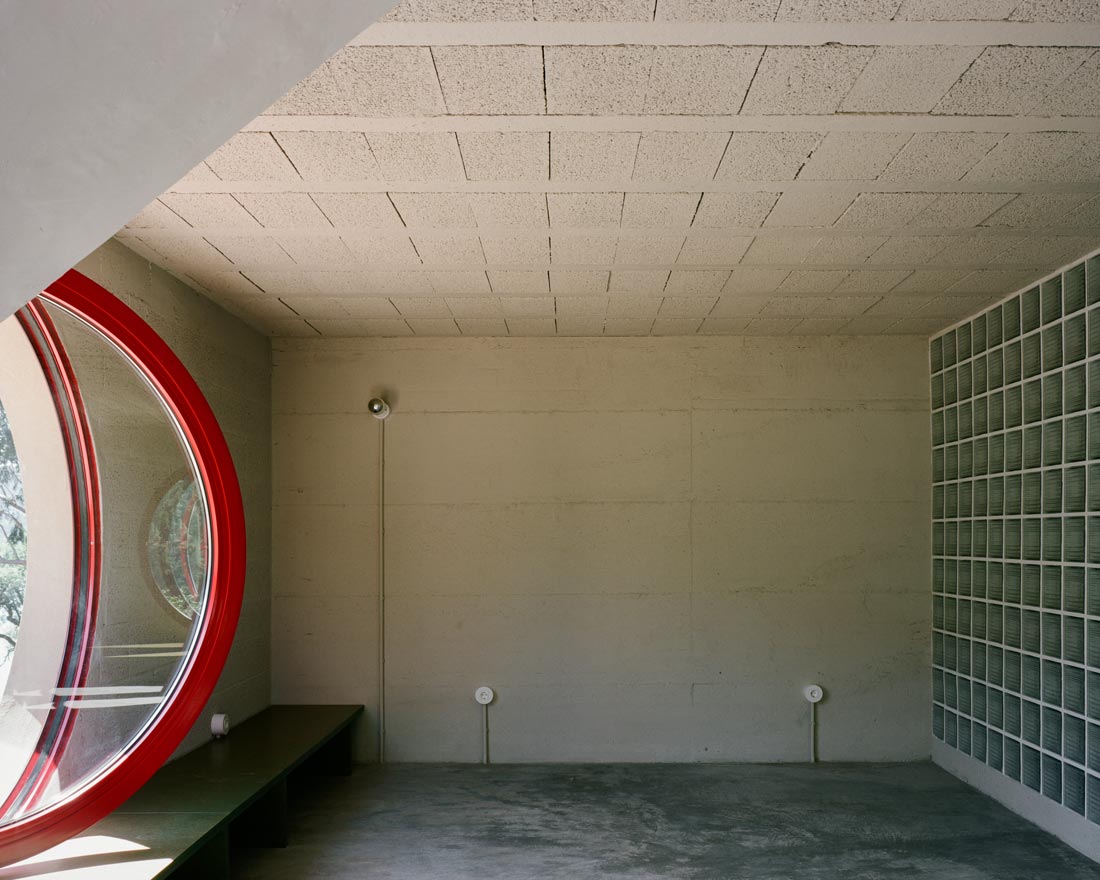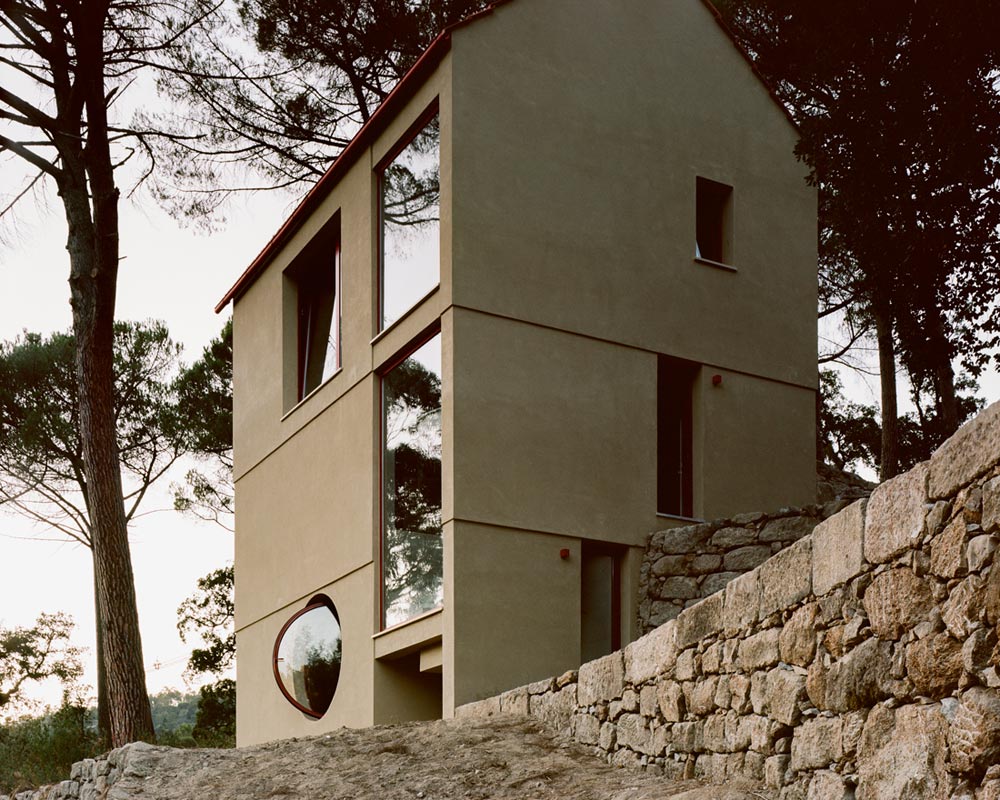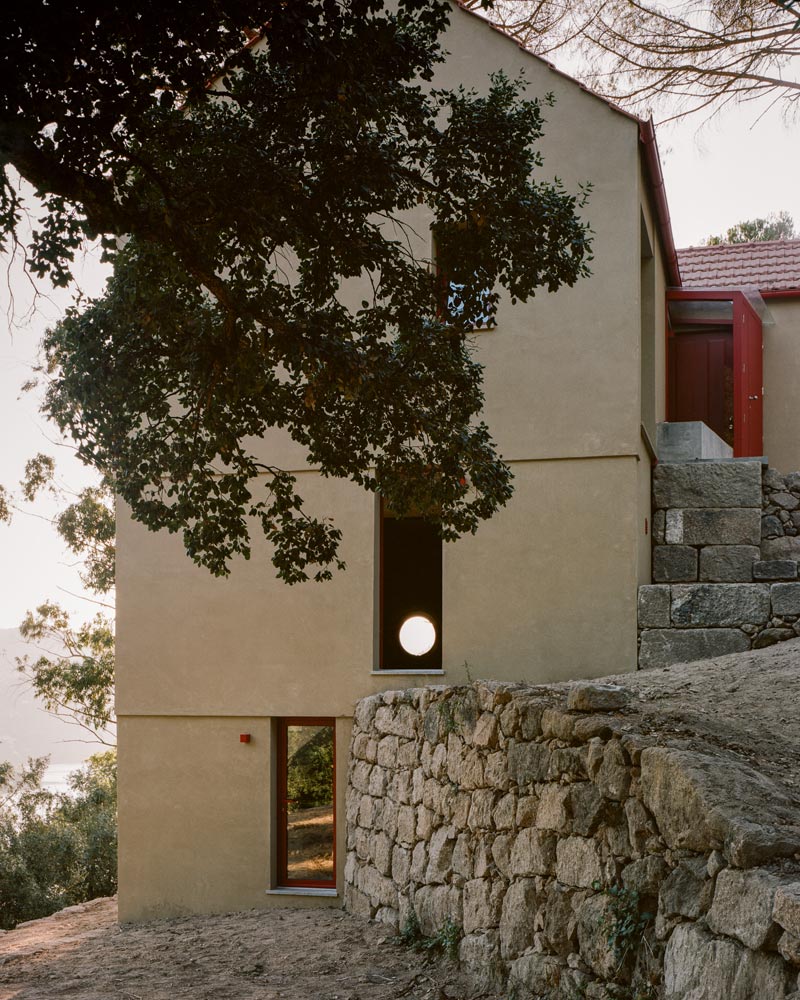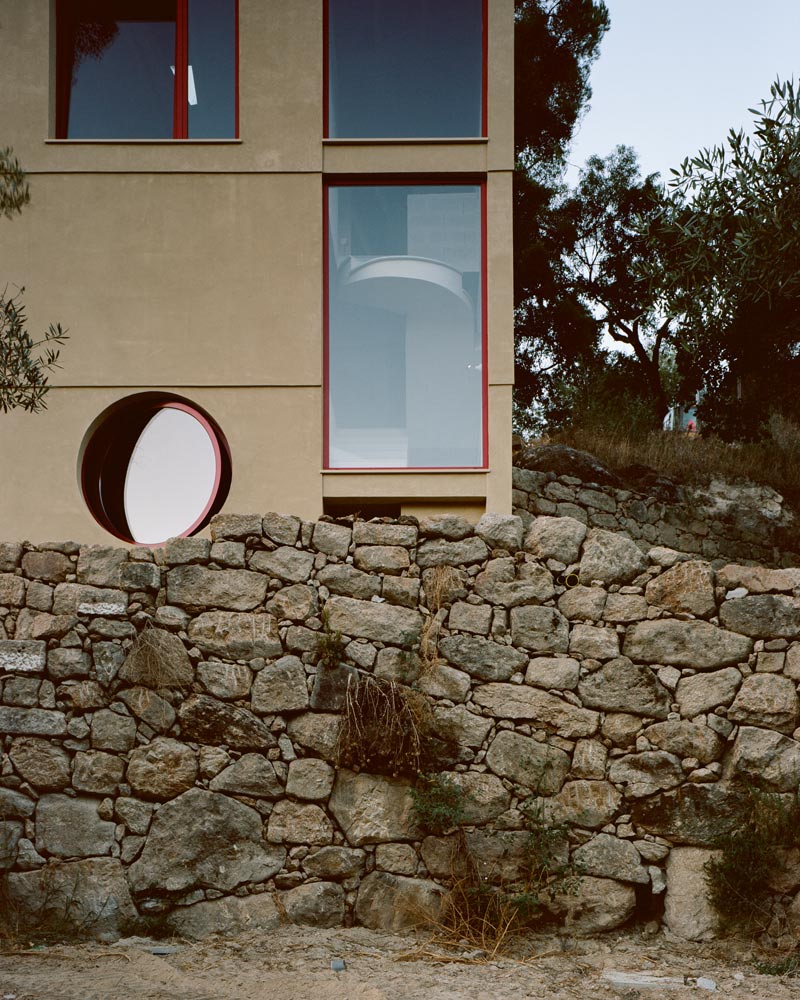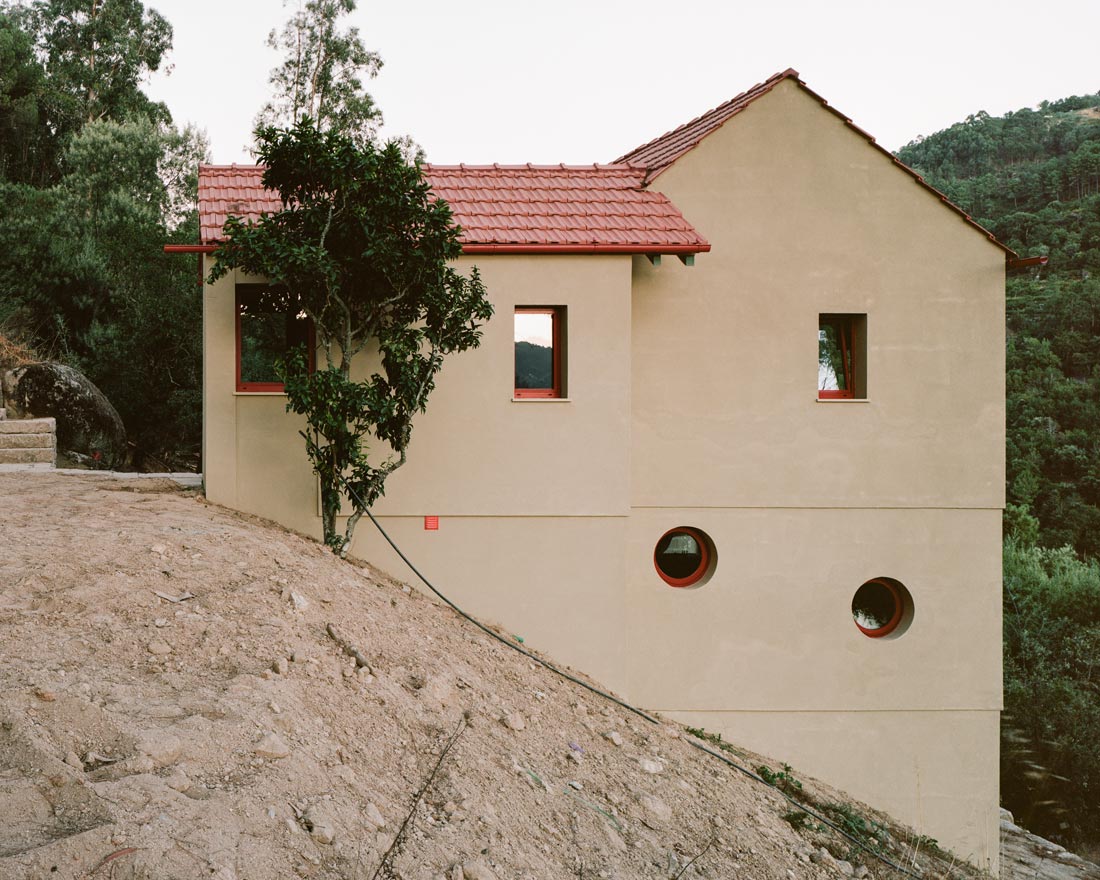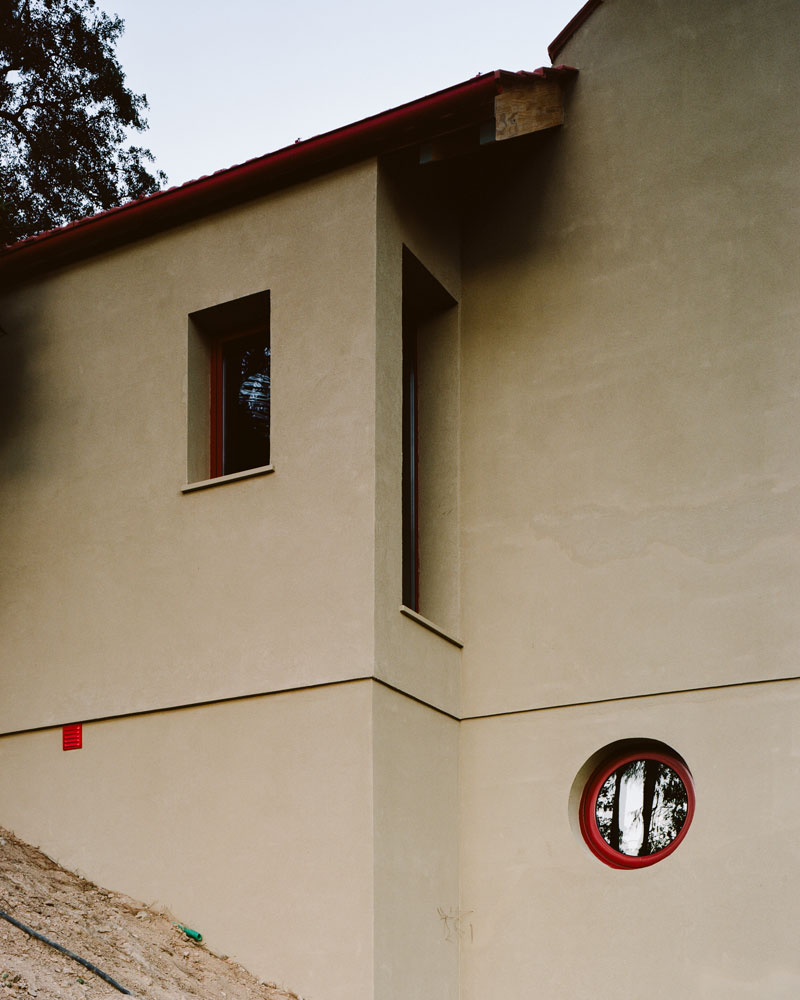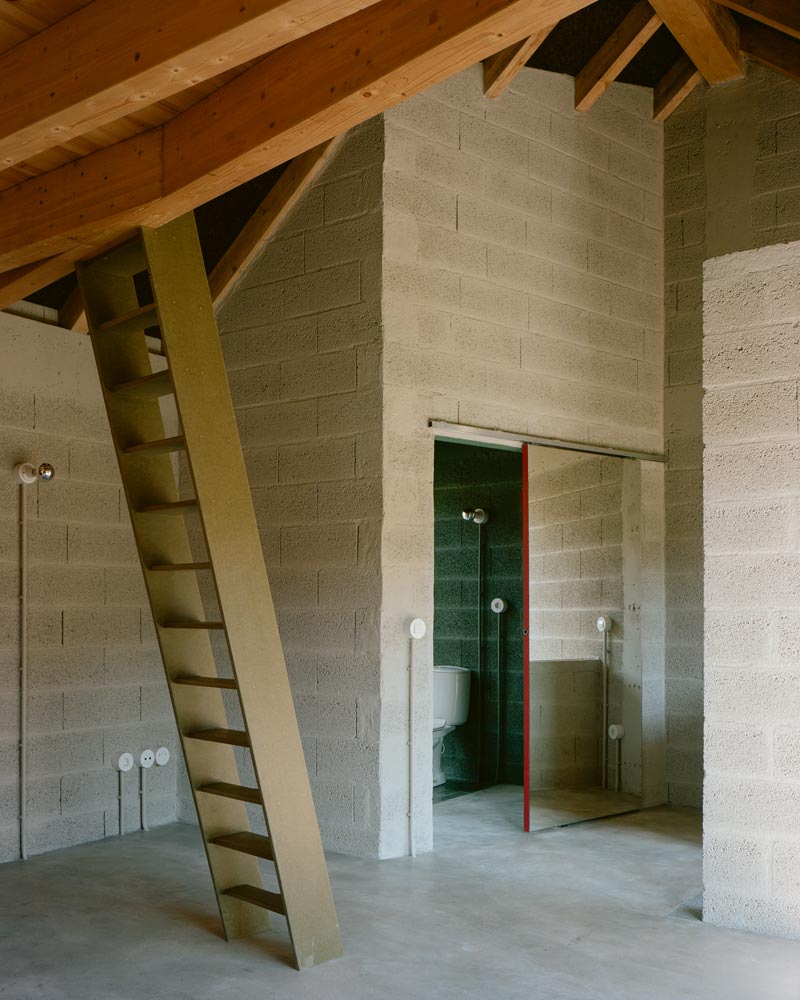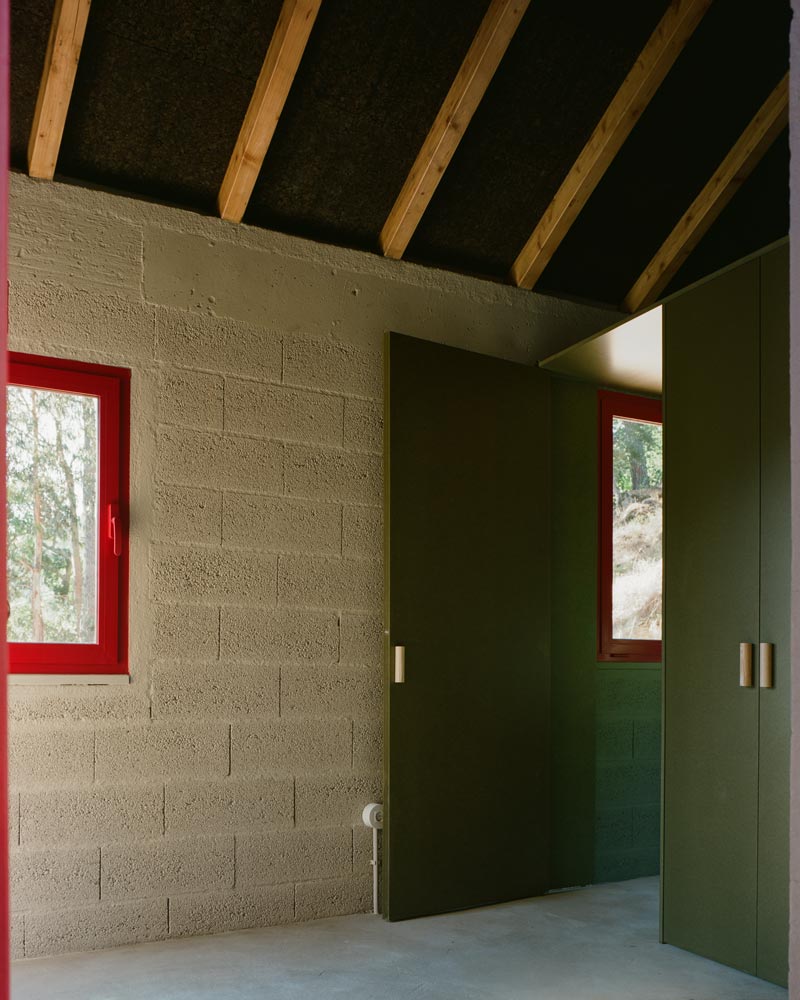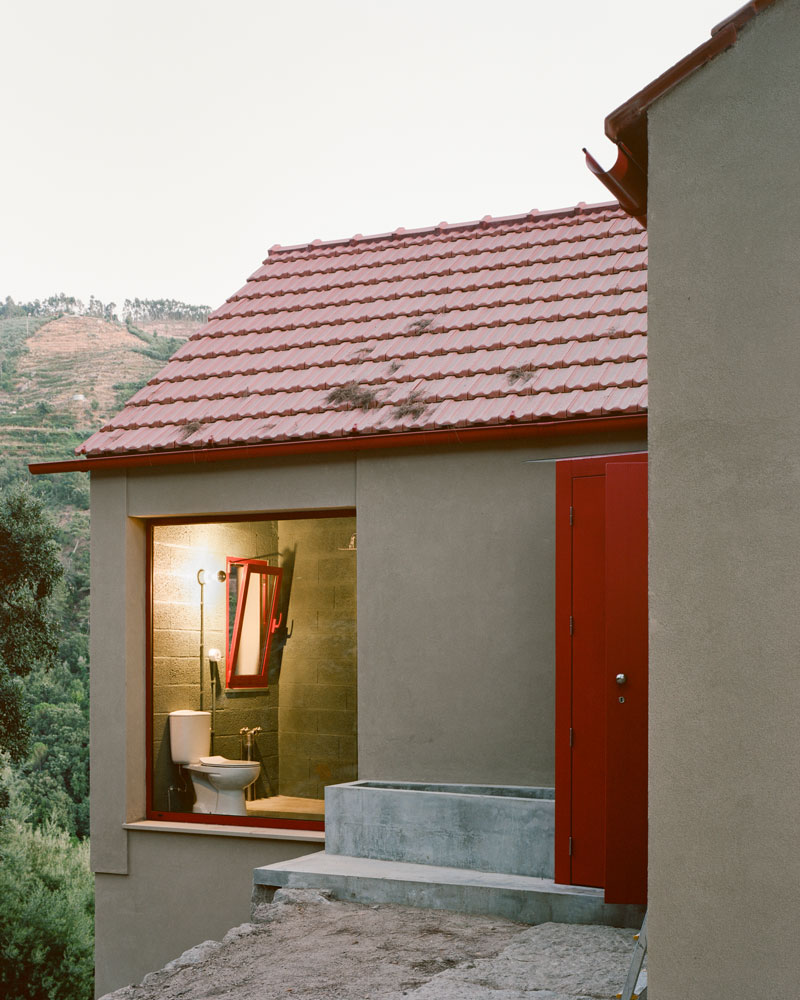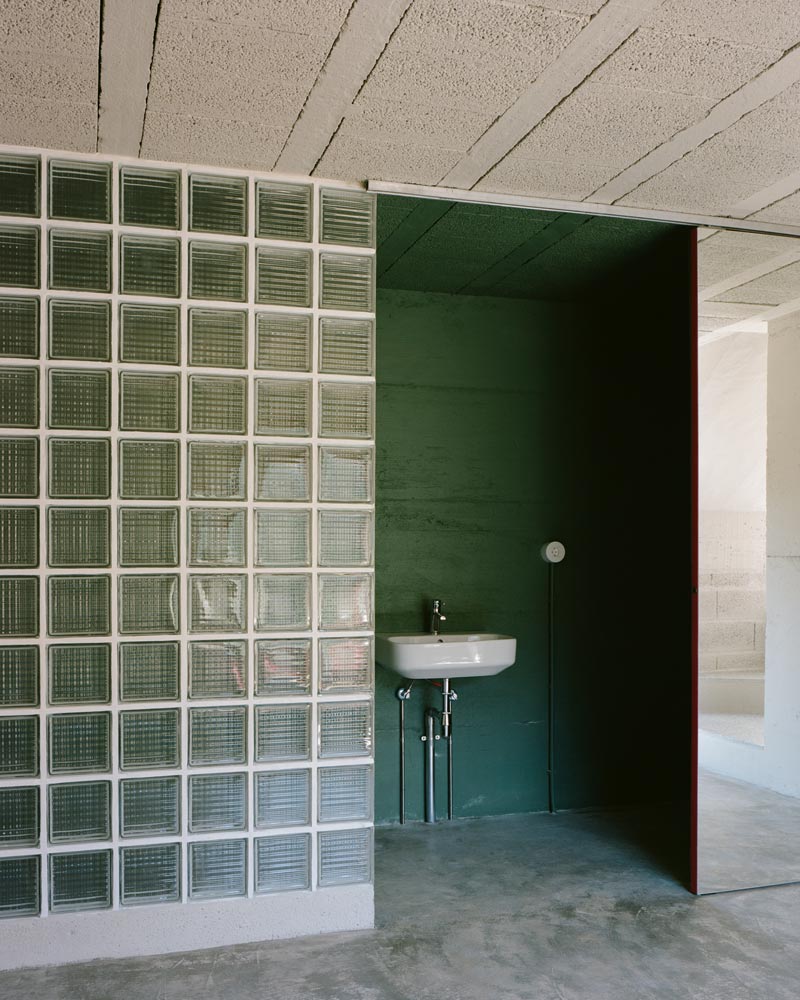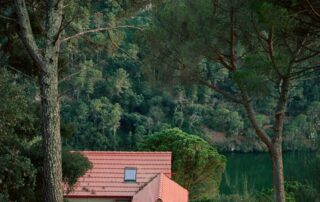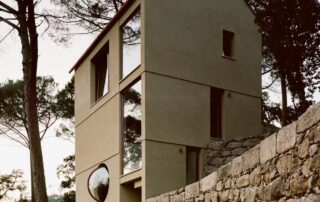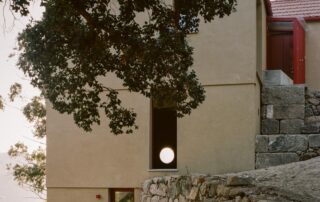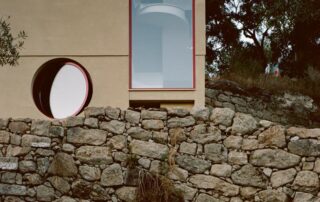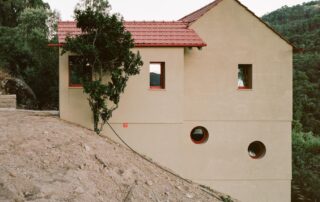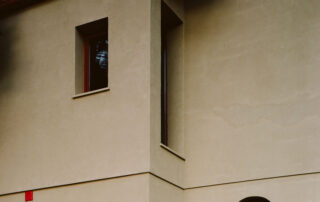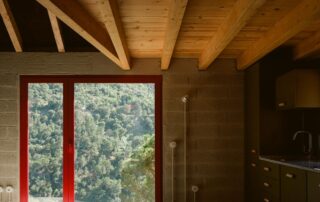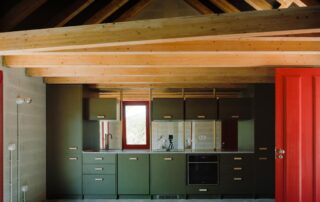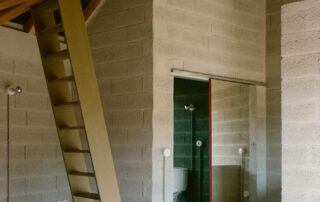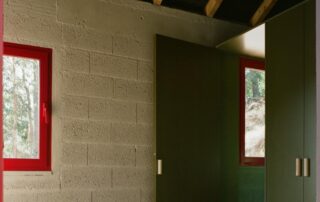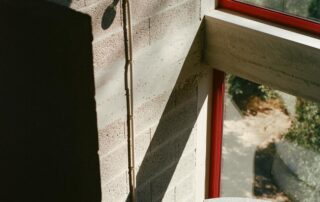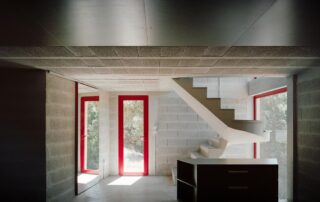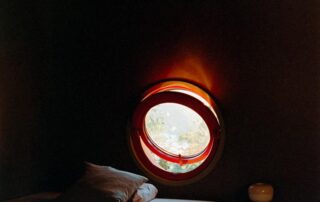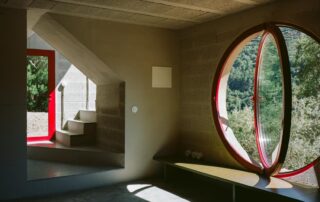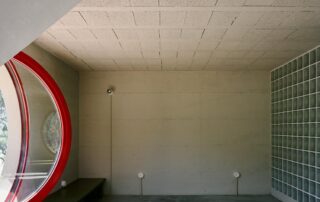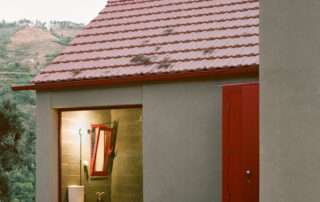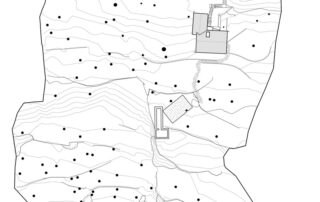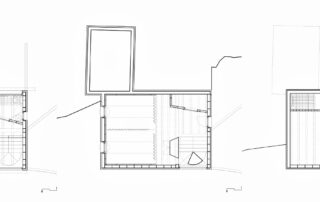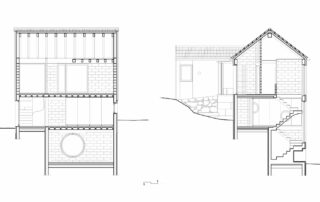This house attests to the idea that architecture is a long, arduous and patient process. From the outset, it redefined for us the sense that architecture is expected to cross various scales, spanning from the design of a door handle to the modeling of its territory. Until the end, it was conceived as a refurbishment, even though it was practically built from scratch.
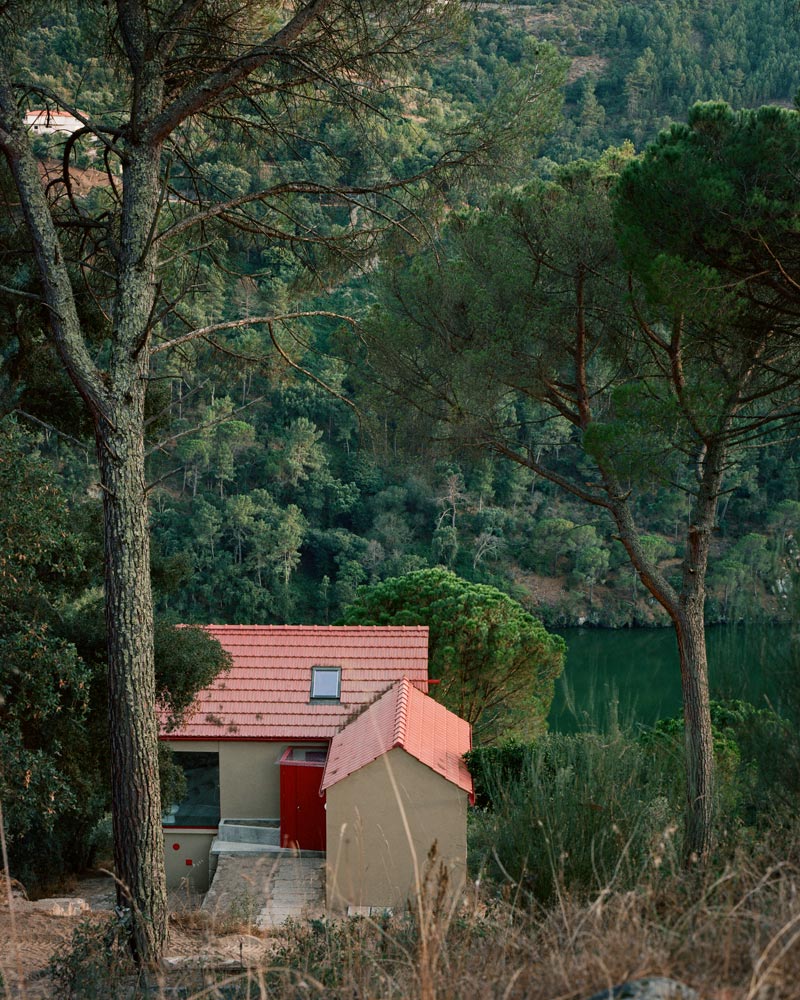
Photo: ©Francisco Ascensão.

Our proposal was to dismantle and reassemble the existing stone ruin, offsetting two walls for the required extra space. In the ecological spirit it presupposed, roof and slab structures ought to be built in wood and thermal insulation with cork panels. Like everything else, new wooden frames were to be custom designed.

Plans.
Combined with the current shortage of skilled construction labour in Portugal, its original design became impossible. We were forced to redesign the house according to the technical and material limitations of a local contractor. As an outcome, design became a collective achievement.
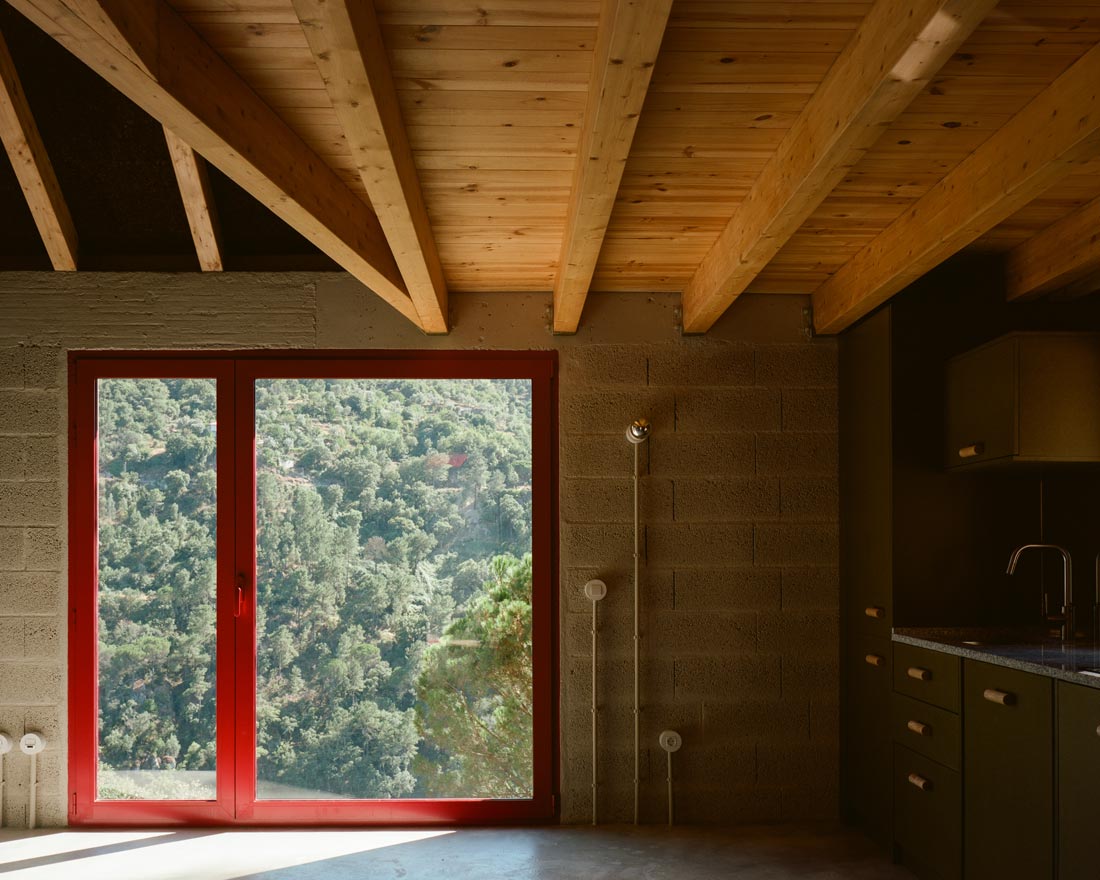
Photo: ©Francisco Ascensão.
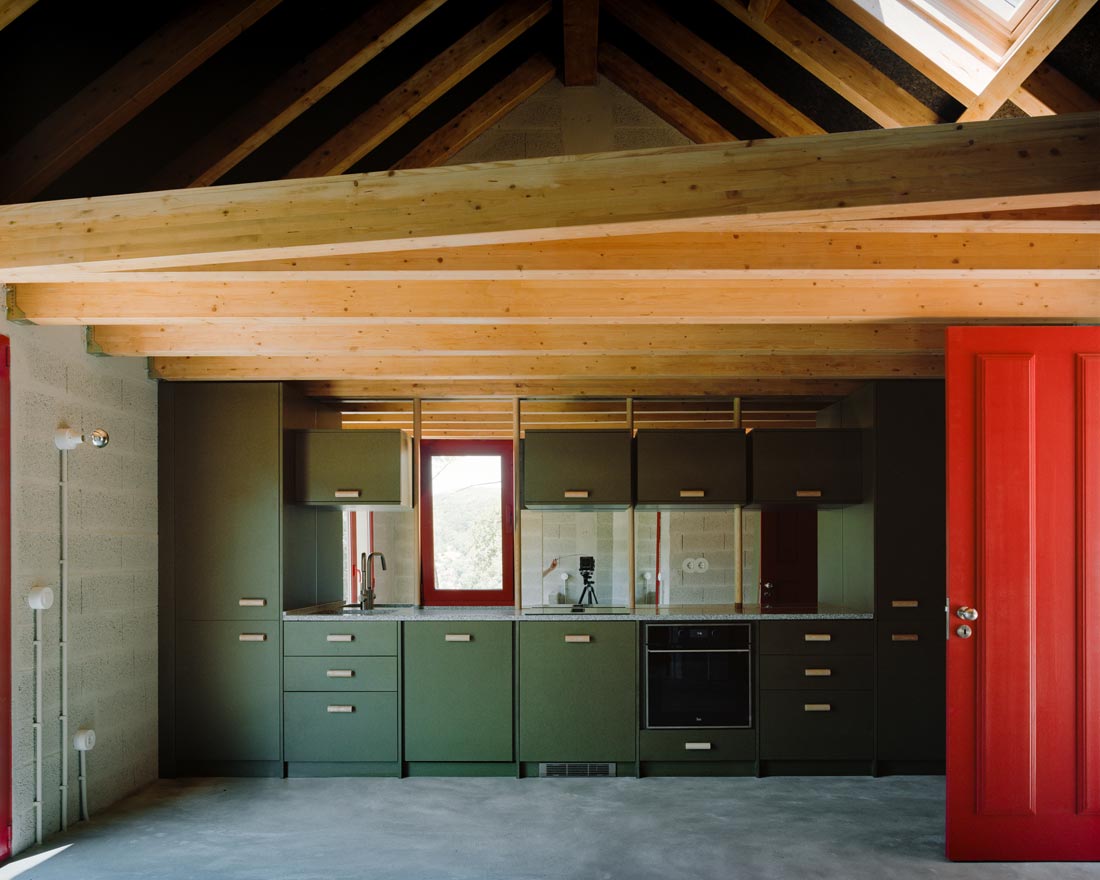
Produced to remain hidden, all of these materials were here used “as found” and “as is”, in the spirit of Alison & Peter Smithson or Kazunari Sakamoto. New aluminum frames (including standard handles) were chosen from a catalogue, only to be subverted by a vivid color. All the original stones of the house were reused to build new retaining walls.
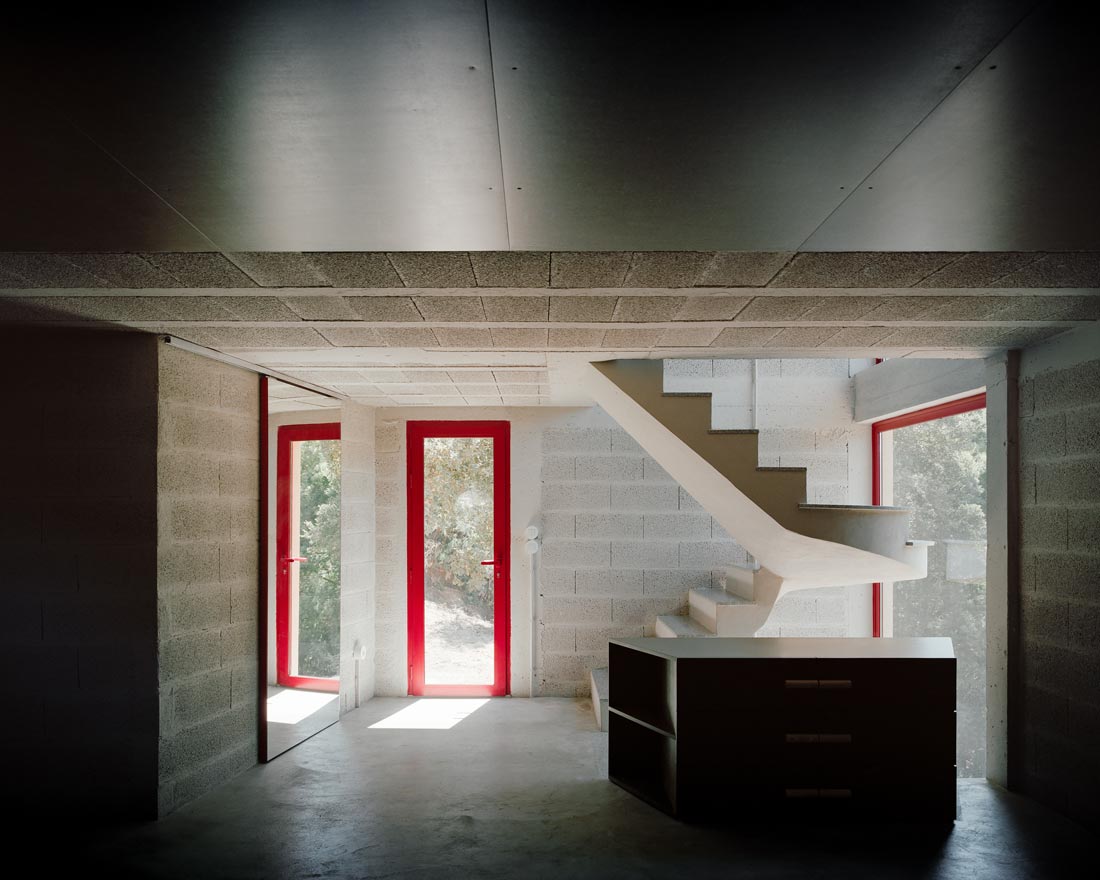
Photo: ©Francisco Ascensão.
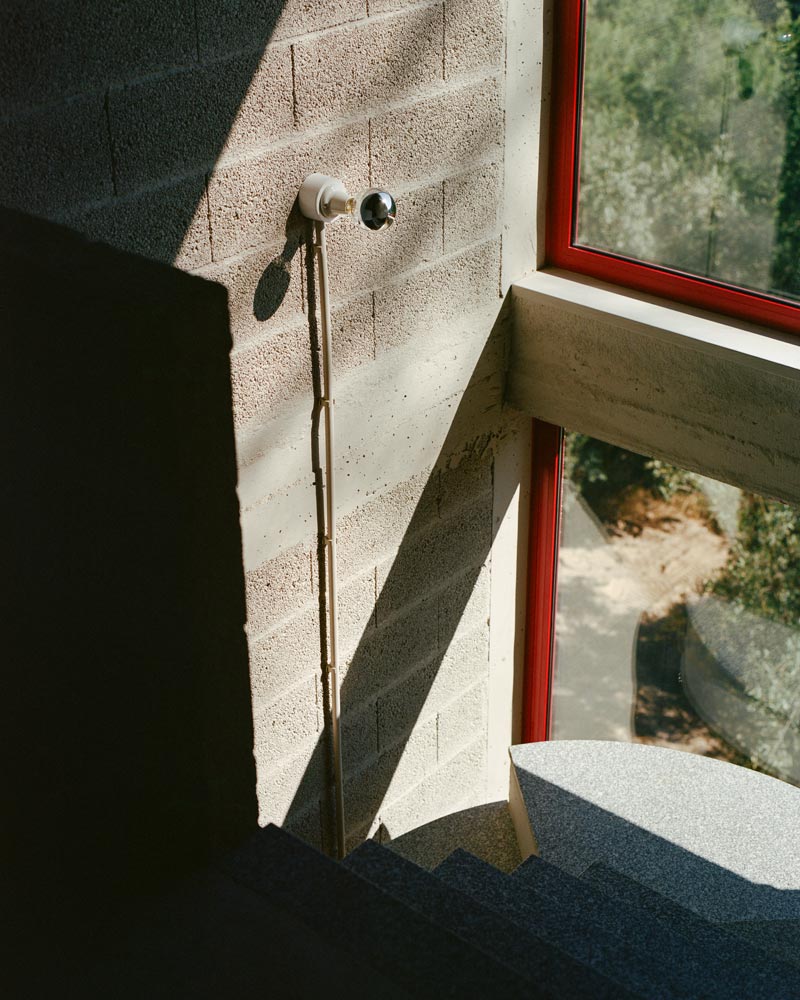
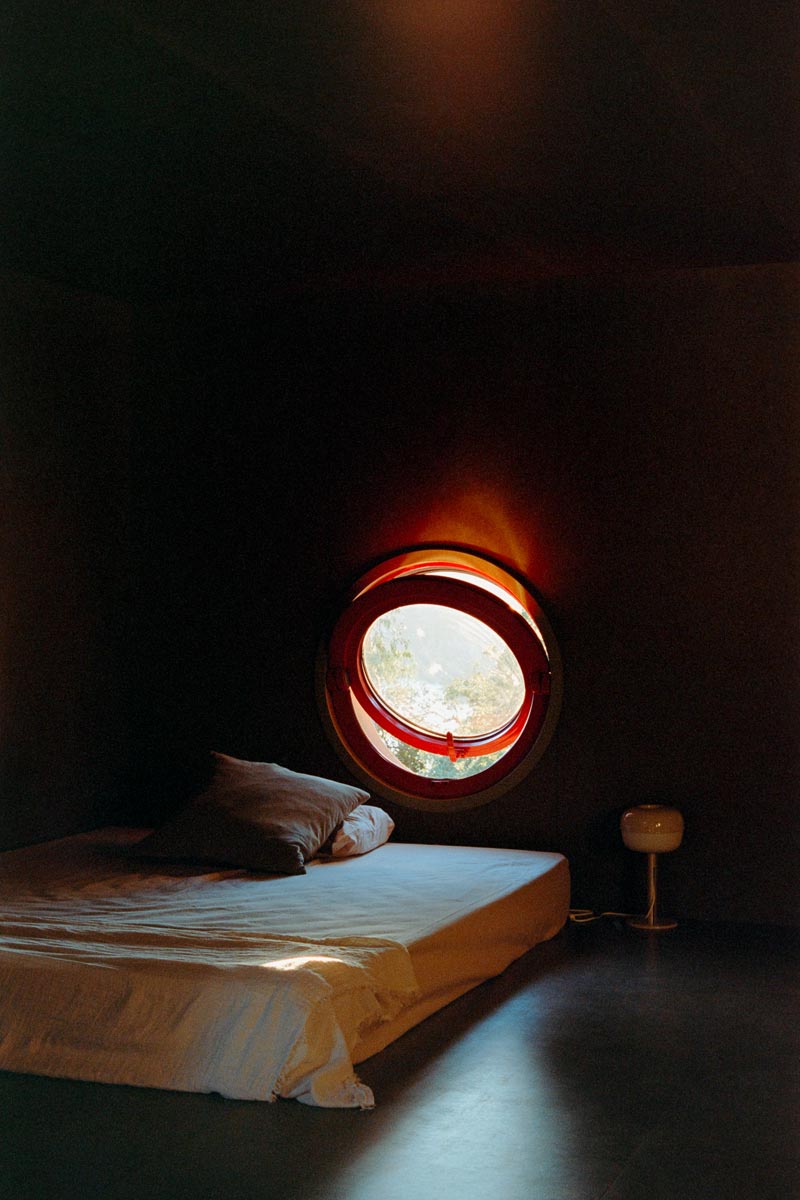
Thereby, drawings illustrating this publication reflect not our original design, but its new life: as-built and somewhat “designed” by others. This inverts meaning and allows one to learn from the compositional sense of an otherwise ordinary construction. Richness of space resulted from this economy, translated into a maximization of the minimal gesture.
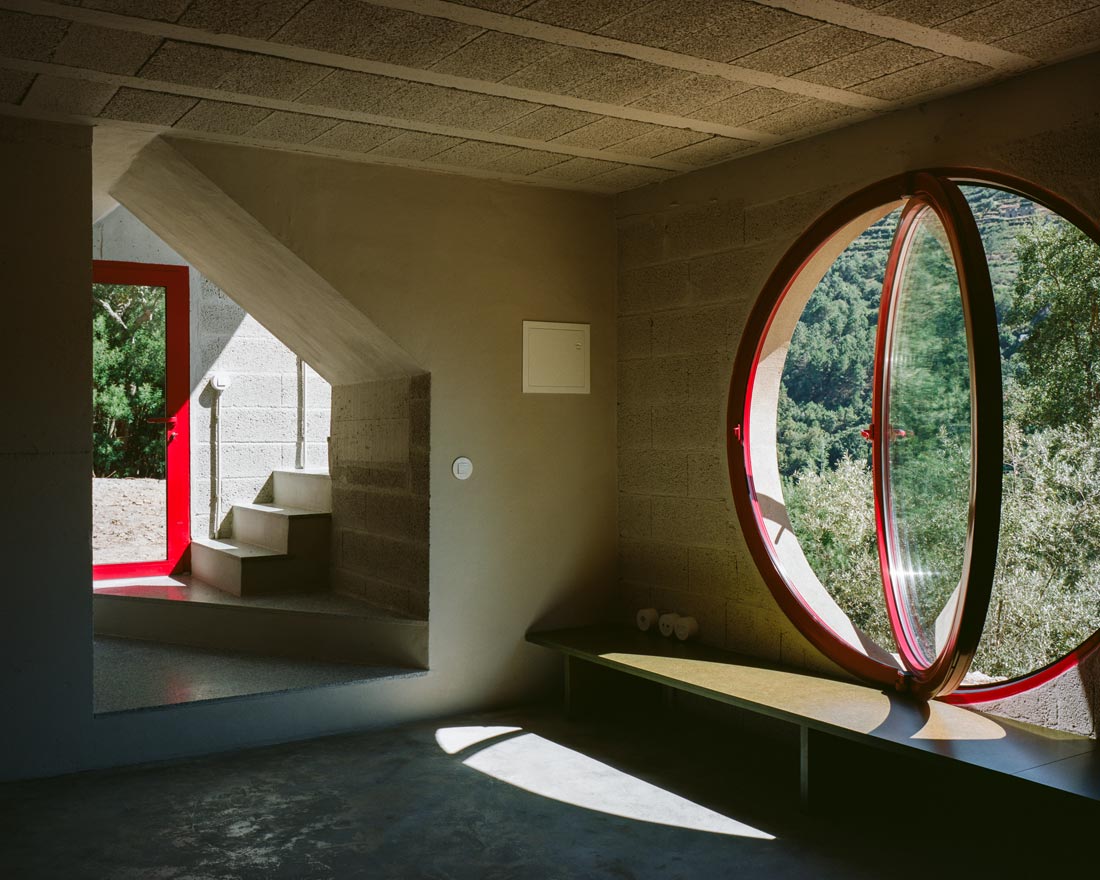
Photo: ©Francisco Ascensão.
